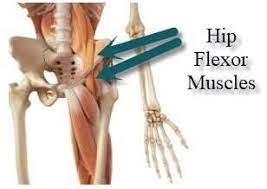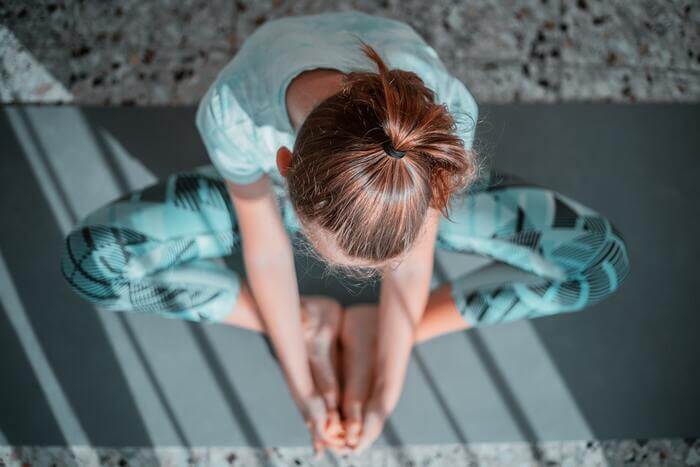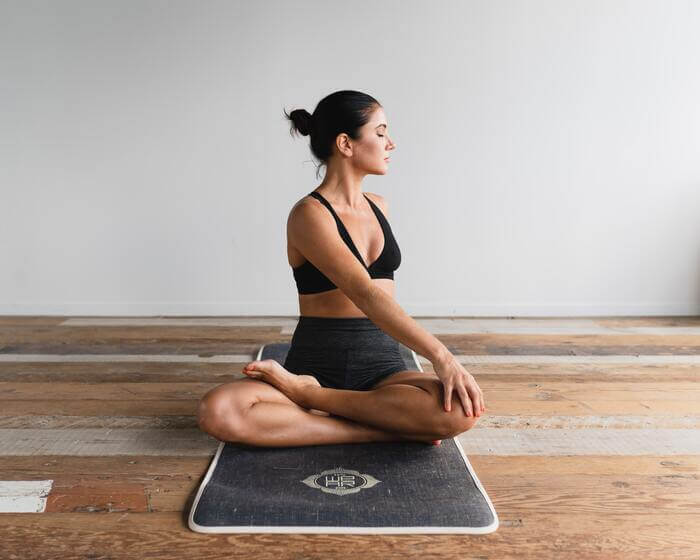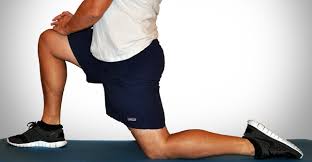If you’re an avid runner, it’s likely that you’ve experienced some tightness in your hip flexors from time to time.
But if you really want to improve your running form and build your endurance, it’s important to find the best way to stretch your hip flexors for greater flexibility.
Start with these simple stretches you can do at home or before your next jog.
Table of Contents
What are hip flexors?

The hip flexor is made up of a group of muscles that jog from your groin to your thigh.
These muscles allow you to move your leg forward and backward, as well as up and down, in order to position yourself in different poses like downward-facing dog or warrior.
But even though these muscles are very important for everyday movements, they don’t get stretched often enough—and tight hip flexors can cause a lot of pain and discomfort in people who sit a lot throughout their day.
So if you spend most of your time on a computer or have trouble stretching out at night before bed, try incorporating some stretches into your daily routine. It will help loosen those stiff muscles!
Why they matter

The hip flexor muscles are three muscles, called psoas major, iliacus and rectus femoris that start in your lower back (lumbar spine) and go through your abdominal area then end in your thigh.
They help you lift and bend forward, walk and run. Tight hip flexors can limit range of motion by keeping you from bending down fully or from raising your knee high when running or walking.
Aside from being part of a healthy exercise program, stretching regularly will keep hip flexors flexible and reduce any pain associated with muscle imbalances in your hips.
Best stretches for hip flexors

Many runners (and regular exercisers) are plagued by tight hip flexors—those muscles on either side of your hips.
Tight hip flexors can make it difficult to lift your leg high or run fast. The good news: Stretching your hip flexors is easy.
Just do it! One quick and easy stretch involves simply lying down with a belt around one ankle and pulling that leg toward you until you feel a gentle pull in your hip. Repeat three times on each side, at least three times per week.
For added benefits, try adding dynamic stretching moves like running in place or walking knee lifts while holding onto a door frame, chair or wall.
Another option is a butterfly stretch. Sit with your back straight and bend one knee, placing your foot on the inside of your other leg, as if you’re sitting cross-legged.
Grab onto that thigh and gently pull it toward you. For a deeper stretch, raise up onto your toes or shift toward one hip as you hold. If you don’t have room to sit in that position, try bending forward while keeping that inside leg straight out behind you (or reach back and grab it).
Hold each stretch for at least 30 seconds but no more than 90 seconds—and be sure to switch sides regularly throughout your day! And finally, stretching can also be done when lying down. Place both legs over a wall so that they are bent at right angles and feet are flat against it.
Slowly lie down so your bottom is resting on your feet and then slowly push yourself back up again. Do not put any weight through your hands or arms when doing these stretches; just use them to help balance yourself during each stretch by pushing off against them.
Try not to push too hard either; rather relax into each stretch and let gravity do most of the work for you.
how to stretch hip flexors while sitting

Stretching your hip flexors can help improve posture and ease back pain.
When you sit, your hip flexors (psoas) become shortened, so it’s important to stretch them periodically throughout the day.
Whether you’re sitting at a desk or on a plane, stretching your hip flexors should be part of your daily routine. Here are two great stretches that will keep your hips feeling loose and limber
1. Sitting cross-legged on the floor with your spine straight, lean forward from your hips until you feel a stretch in your upper thighs. Hold for 10 seconds and repeat three times. If necessary, place one hand behind you for support as you lean forward into the stretch.
2. While seated, cross one leg over your other knee and pull your toes toward you. You’ll feel a stretch along the inside of your thigh, which is where many people hold tension in their hips. Again, hold for 10 seconds and repeat three times per side.
how to stretch hip flexors with foam roller

Lie facedown on a yoga mat. Place the highest point of one of your hips on the foam roller. The foam roller ought to be situated just underneath your hip bone.
Put your lower arms on the floor as though you were playing out a board. Your jawline ought to stay tucked all through the development as though you were holding an egg under your jaw.
Connect with your core. Your ribs ought to be down and your pelvis ought to be somewhat tucked to keep your low back from listing.
Your non-moving leg ought to be off the floor with just your toes in touch with the ground. Each set ought to start from this beginning position.
While keeping up with your arrangement, utilize your non-moving leg and arms to move all over your hip flexor gradually. Roll from the highest point of your quad to your hip bone.
Roll the front and side of your hip to cover the hip flexors. Utilize the foam roller to gradually move your hip flexors until you track down the most weakness. Hang on that spot for 30-90 seconds while unwinding until the distress is decreased.
Repeat on the contrary leg.
Conclusion
The best way to stretch your hip flexors is on a foam roller. Do 10-20 reps at a time and roll back and forth slowly along your IT bands.
Ideally, you’ll want to do multiple stretches, working your way from one end of your body to another. It may not be comfortable in the beginning, but eventually it will become much easier.
Remember that flexibility isn’t something that happens overnight; it requires practice and commitment on your part. In no time, you’ll find yourself more flexible than ever before!
That’s all folks! Thank you so much for reading through these blogs I hope they have been helpful to some of you, if so please share them with anyone who may need them!! If there are any topics that people would like me to cover just let me know!!!
FAQs
Why can’t I do butterfly stretch?
It’s a common misconception that stretching just makes you more flexible. In reality, stretching is an active process in which you must push your muscles past their normal range of motion. If you’re a beginner, it’s impossible to stretch your hip flexors without being able to reach both legs behind your body. This is one reason why new runners are often plagued by painful hip flexor injuries early on; they try to do advanced stretches before their hip flexors and other leg muscles are ready for them. Another reason why stretching can be difficult if you’re not in shape is because even a very light stretch will increase muscle tension throughout your body, since every muscle—including heart, lungs and stomach—will be forced to work harder as soon as you begin pushing yourself beyond your comfort zone.
How long does it take to stretch out tight hip flexors?
The short answer is that it depends on your flexibility. It also depends on how far you’ve allowed your hips to become tight. And it also depends on what you mean by stretch out. If you’re talking about stretching during a static stretch—that is, holding a single position at or beyond end-range of motion (which can create injury if overstretched)—then it takes longer. On average, people stretch from 5-15 seconds per rep before achieving maximum range of motion; most studies suggest around 10 seconds is ideal for muscle lengthening. That means trying to hold that one flexed position anywhere from 30 seconds to five minutes in order to achieve improved flexibility. Yikes! So we recommend moving past those static stretches and focusing instead on dynamic stretches. Dynamic stretches are like ballistic stretches—they require movement and momentum—and they allow you to achieve greater ranges of motion much more quickly than traditional static stretching does. The following exercises are excellent examples of dynamic hip flexor stretches:
What problems can tight hip flexors cause?
When you walk, run, or lift your leg up behind you, your hip flexor muscles (iliopsoas) are on duty. Sometimes these muscles become short and tight from sitting at a desk or not stretching them enough throughout your day. When they shorten, they put pressure on nearby nerves, causing radiating pain down one or both legs. Other symptoms include lower back pain and tightness in one of your legs when climbing stairs. To stretch your hip flexors safely and effectively, follow these steps













